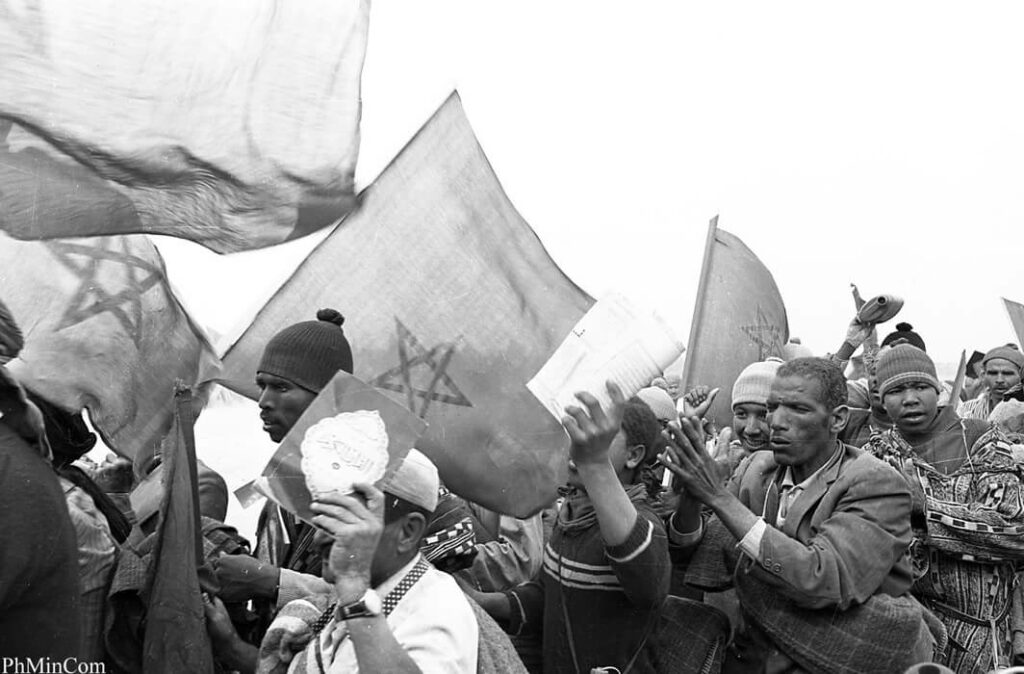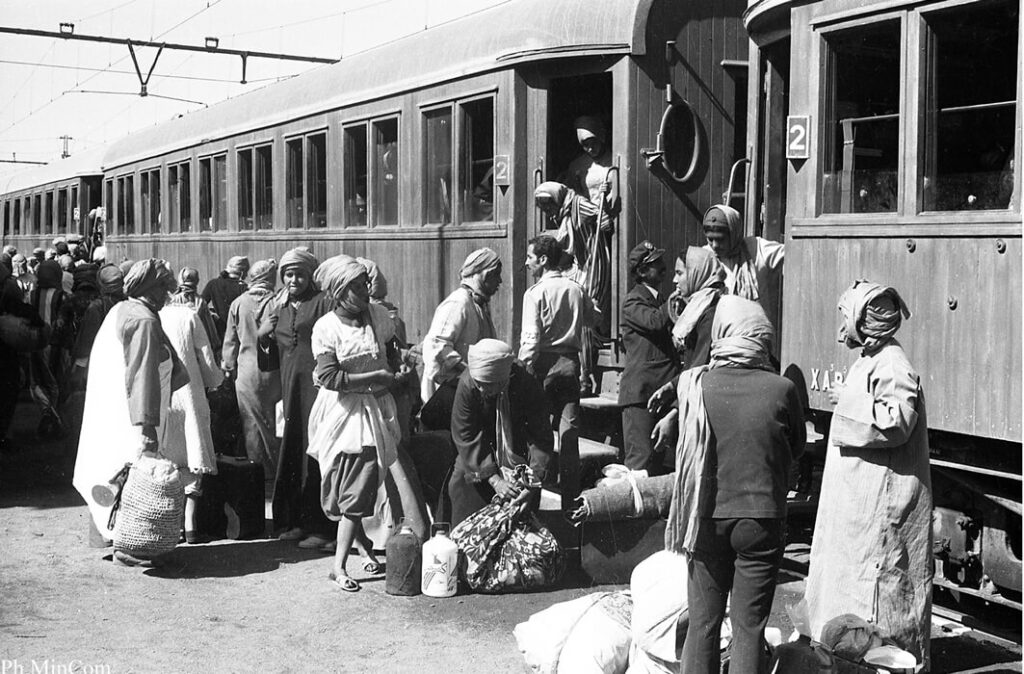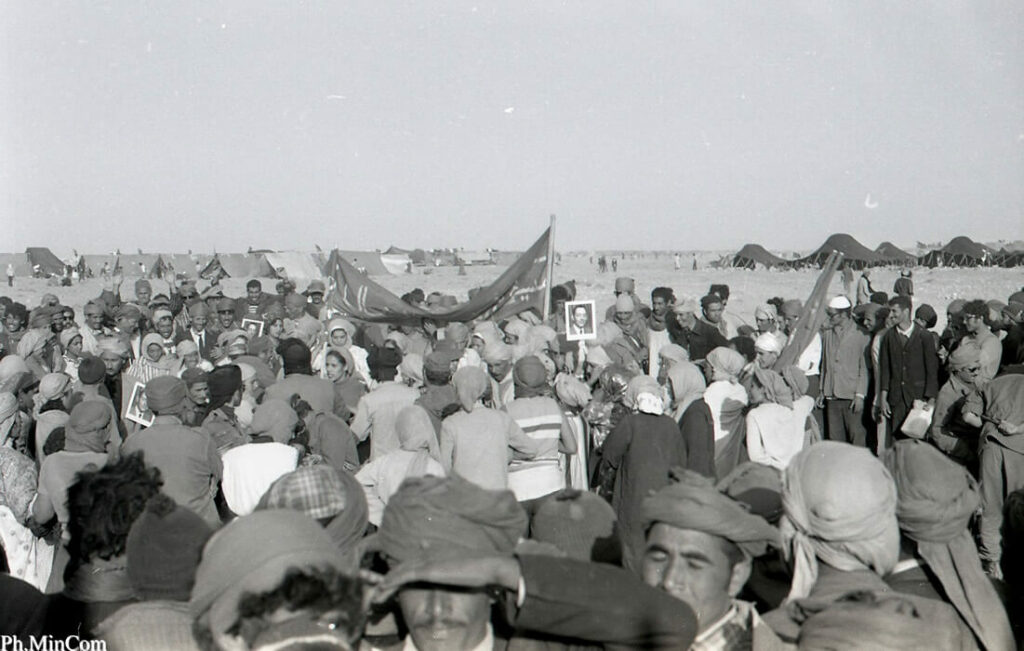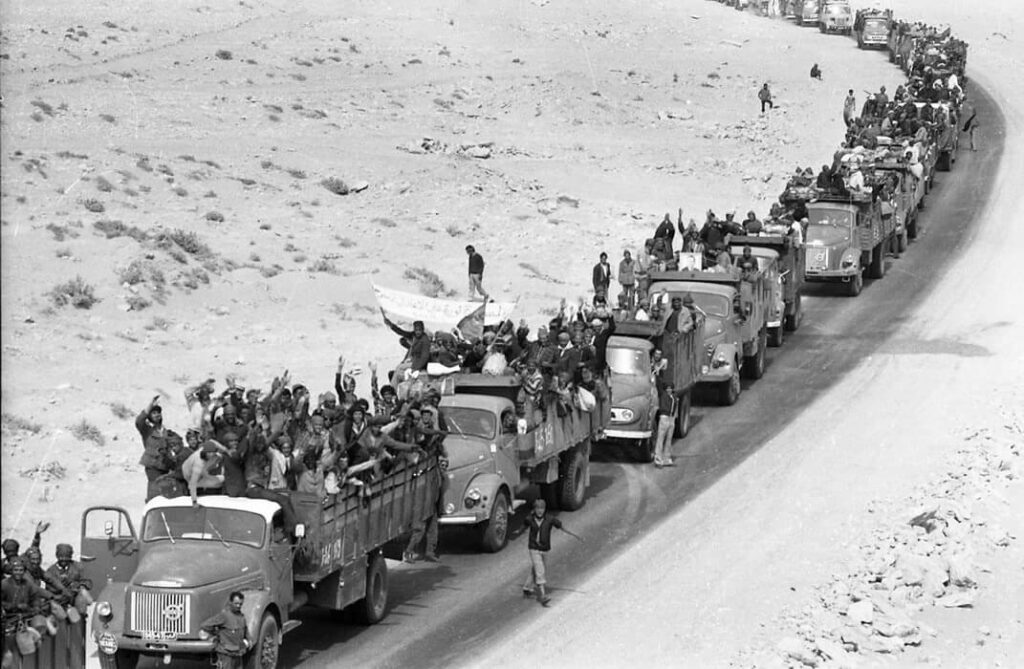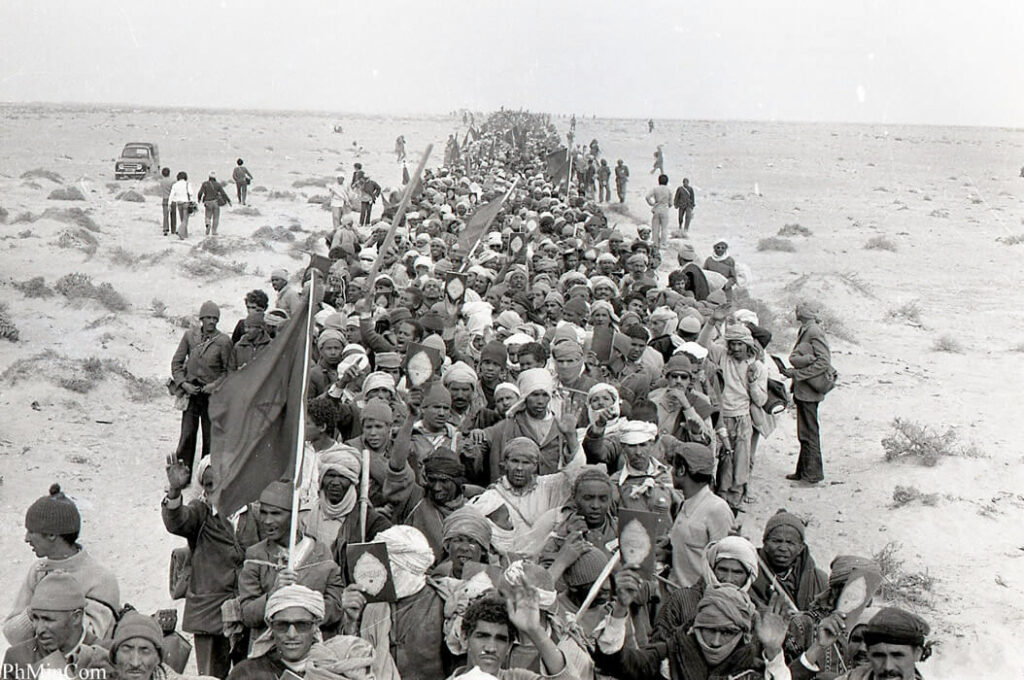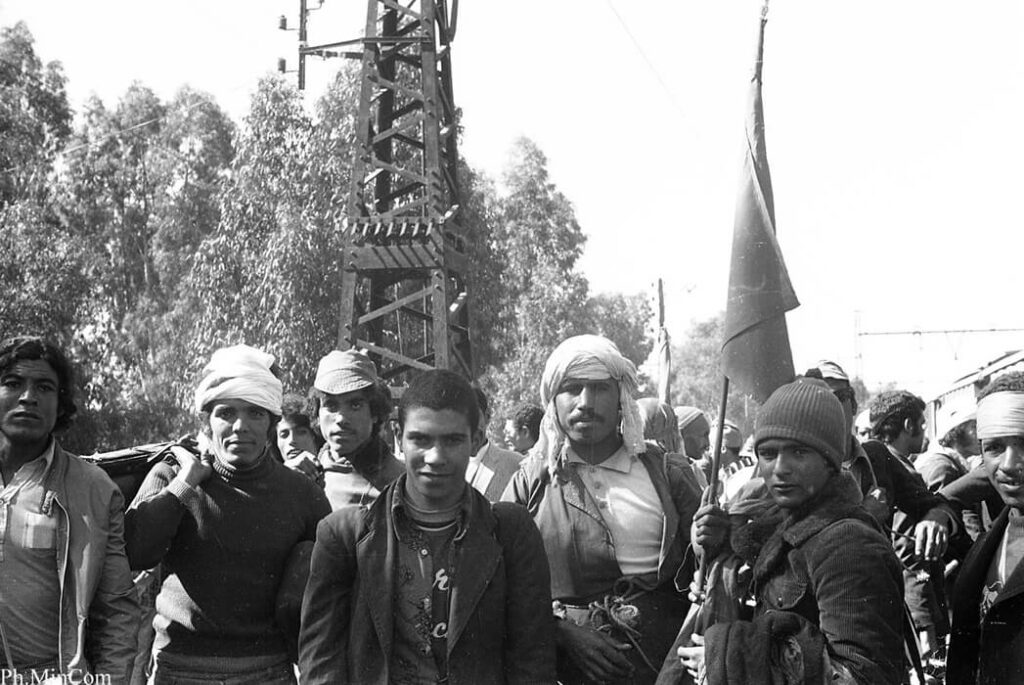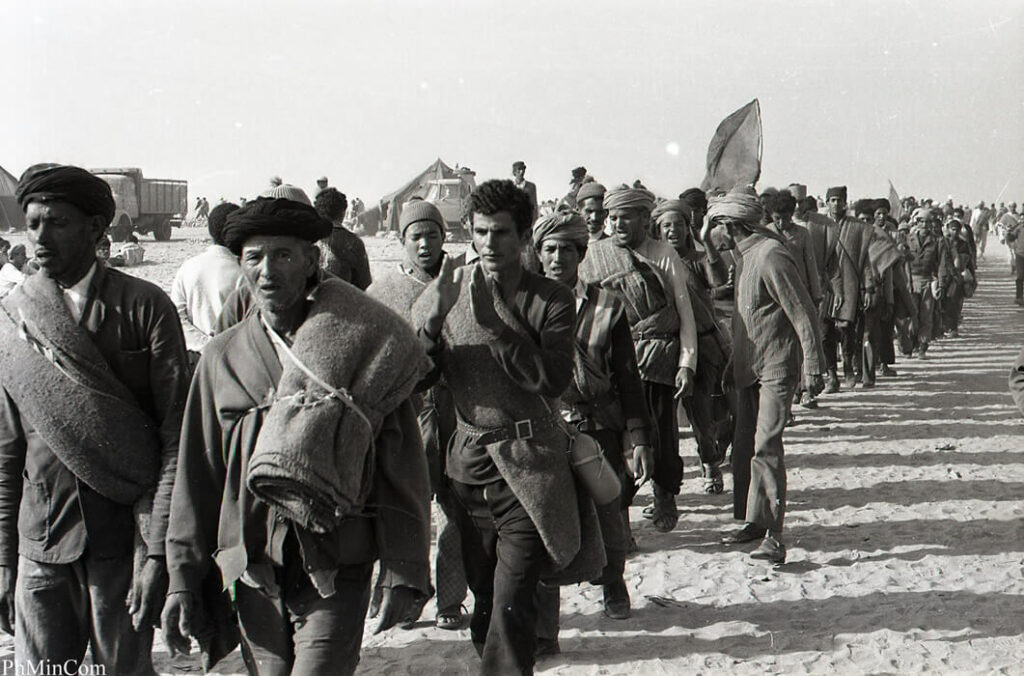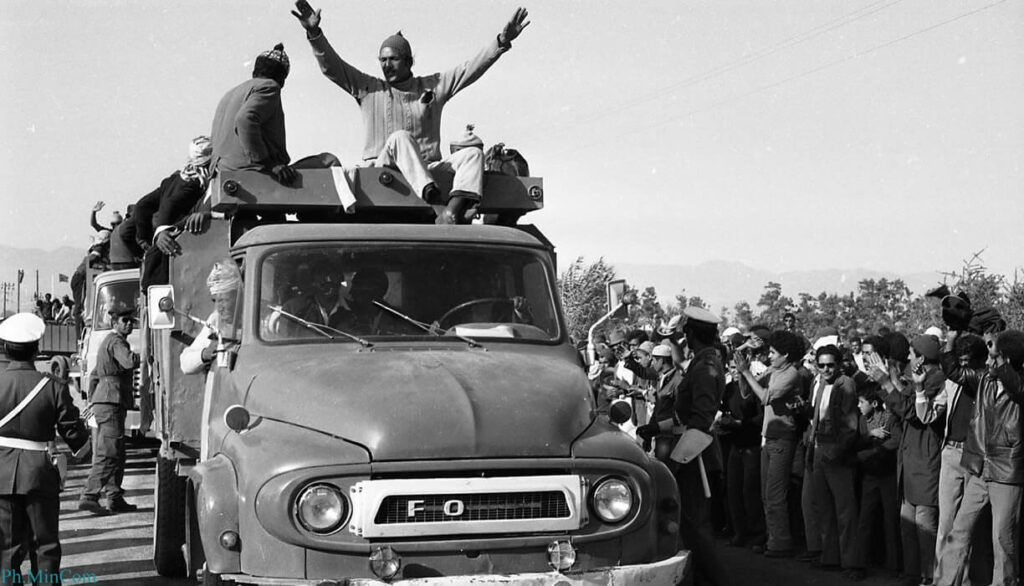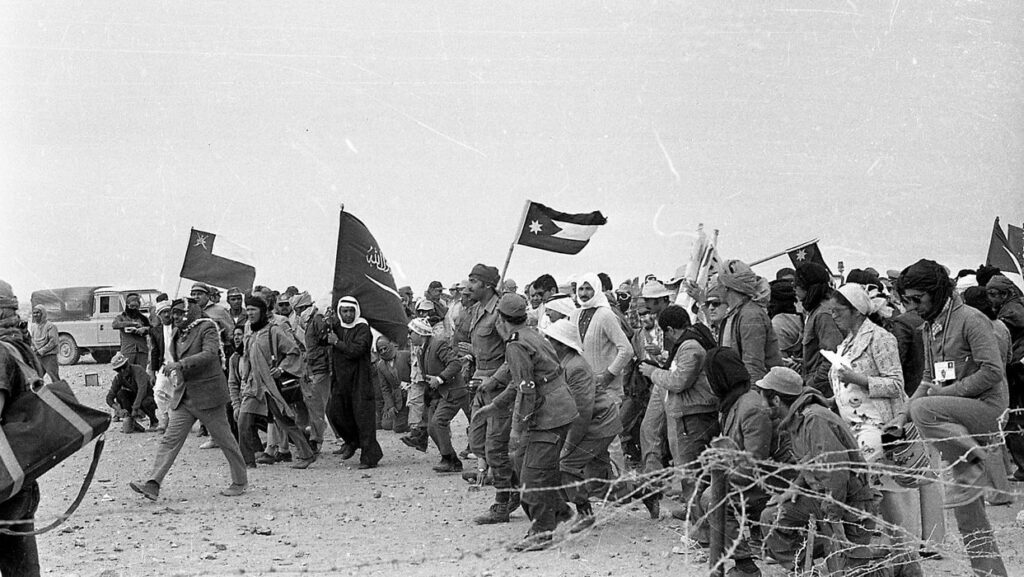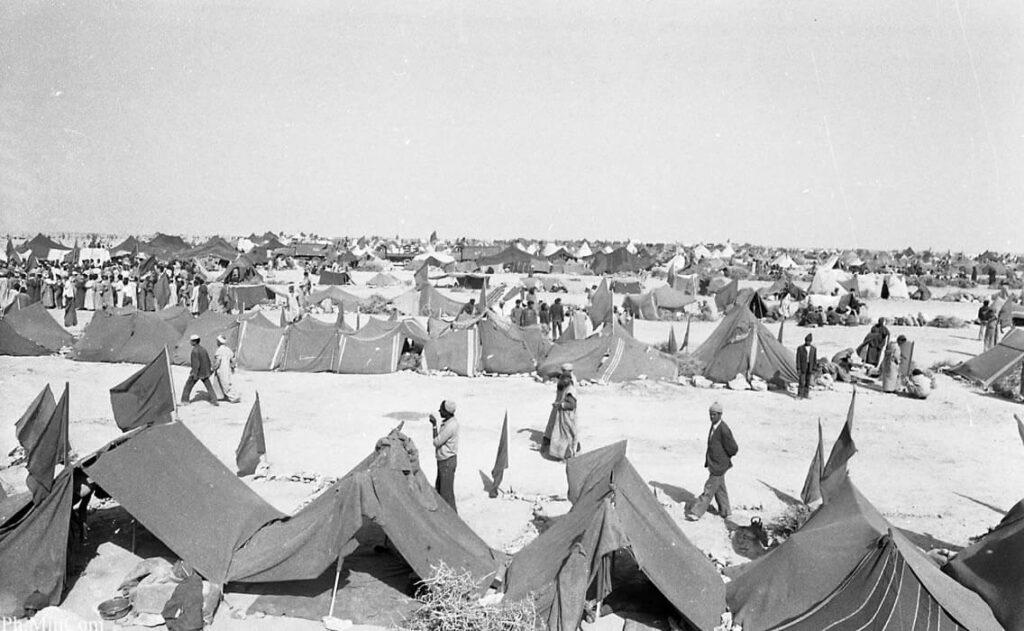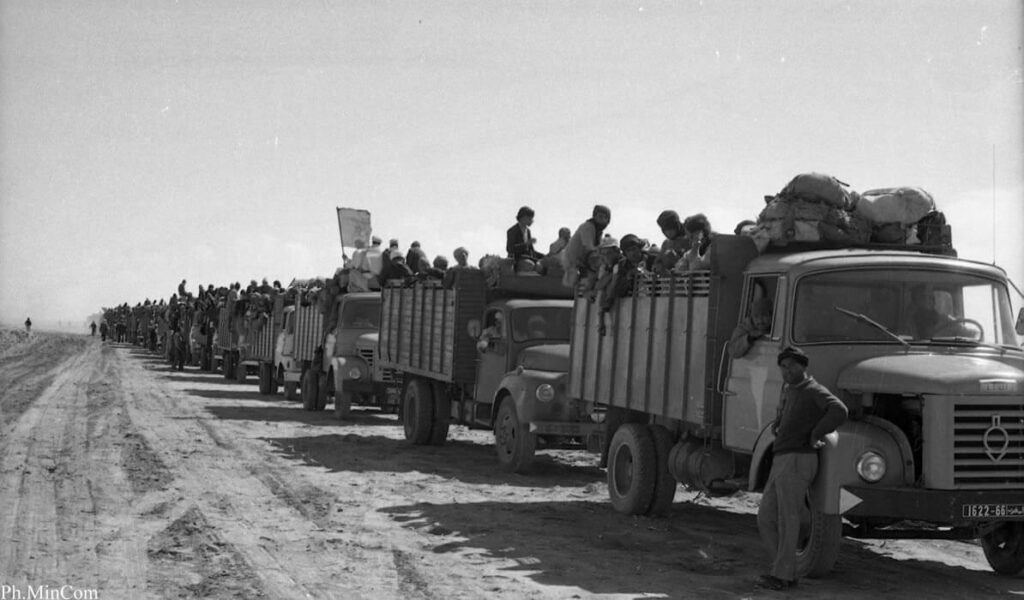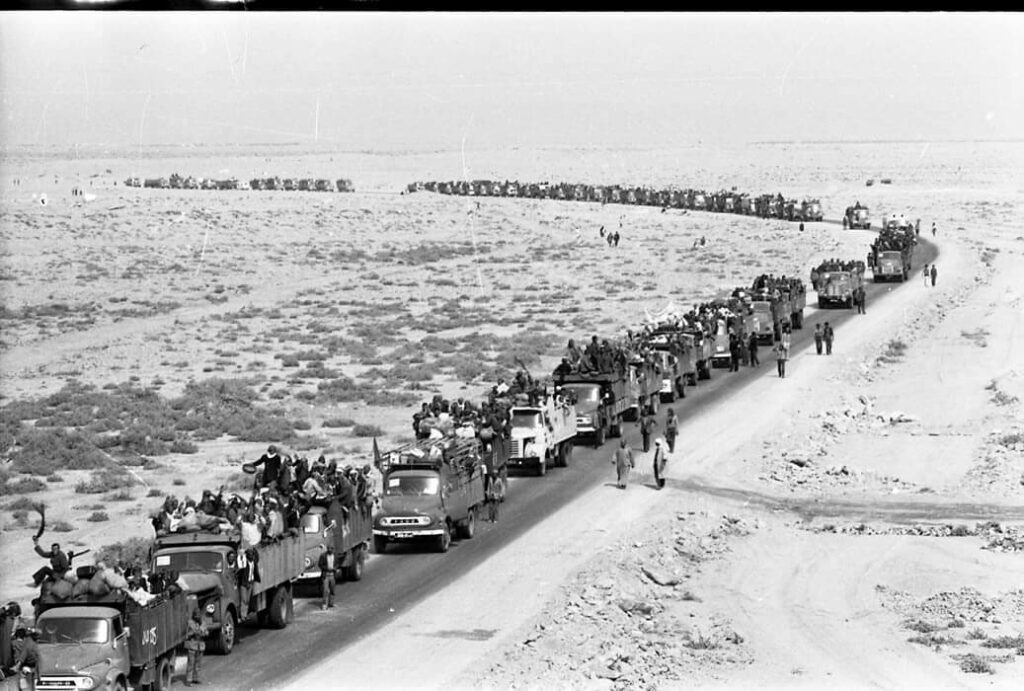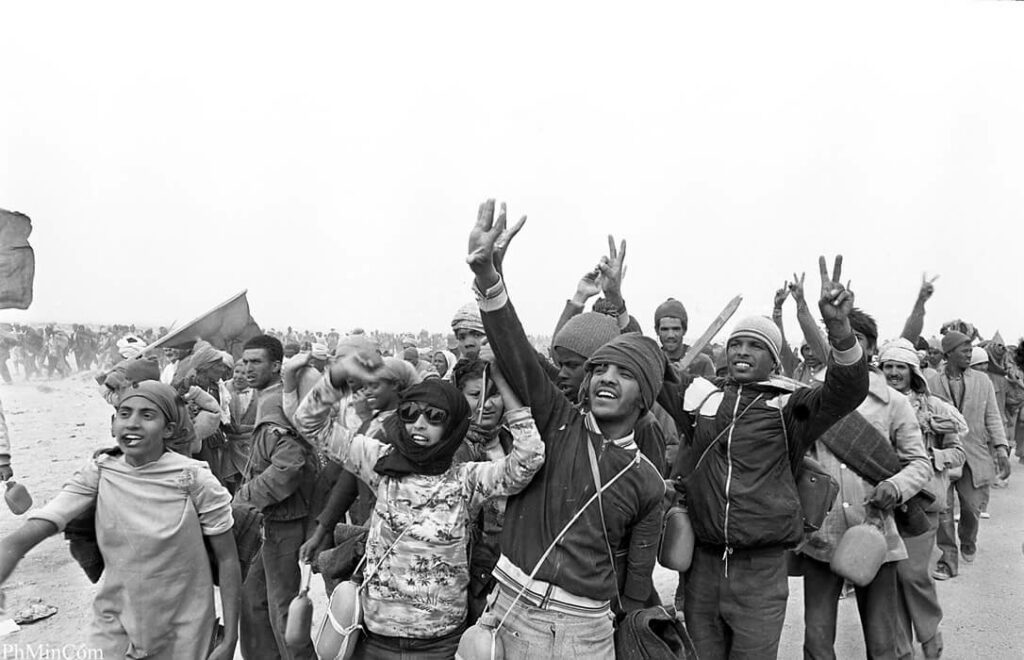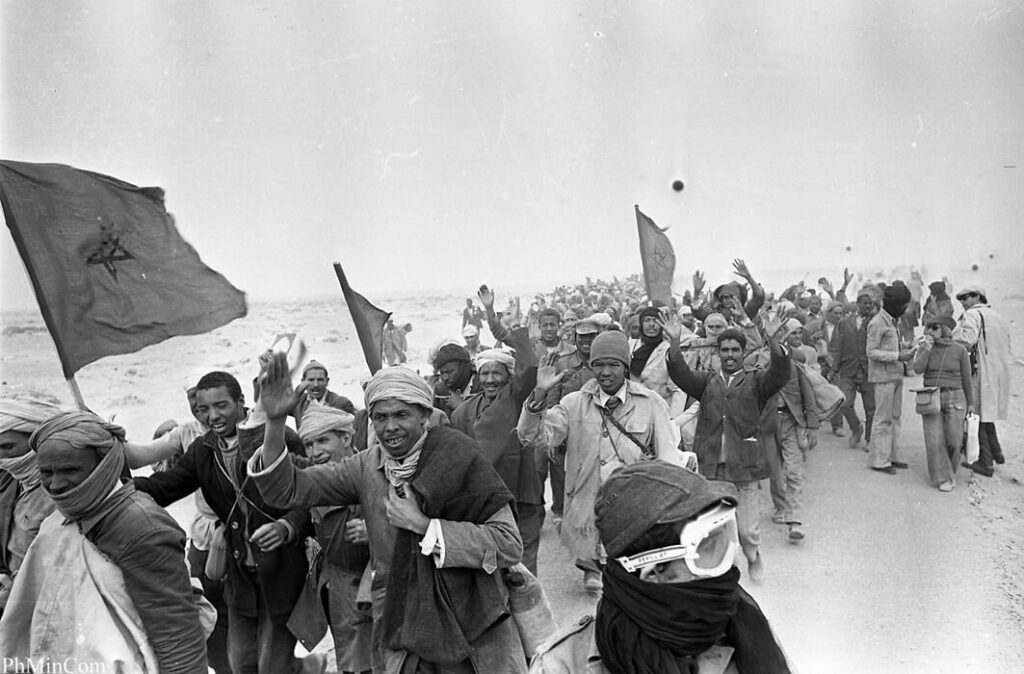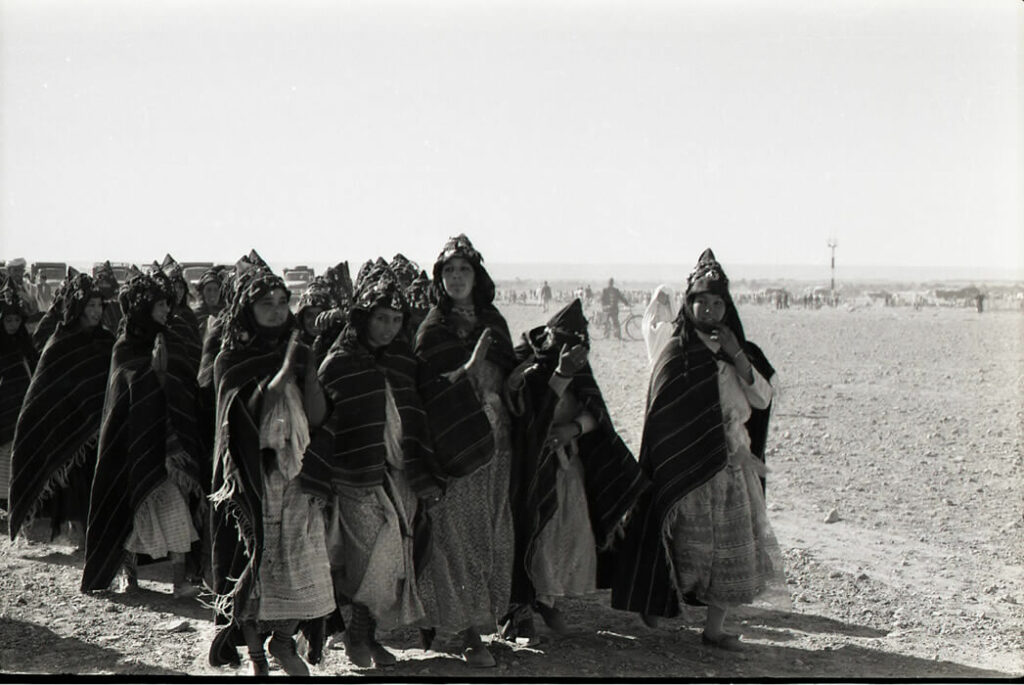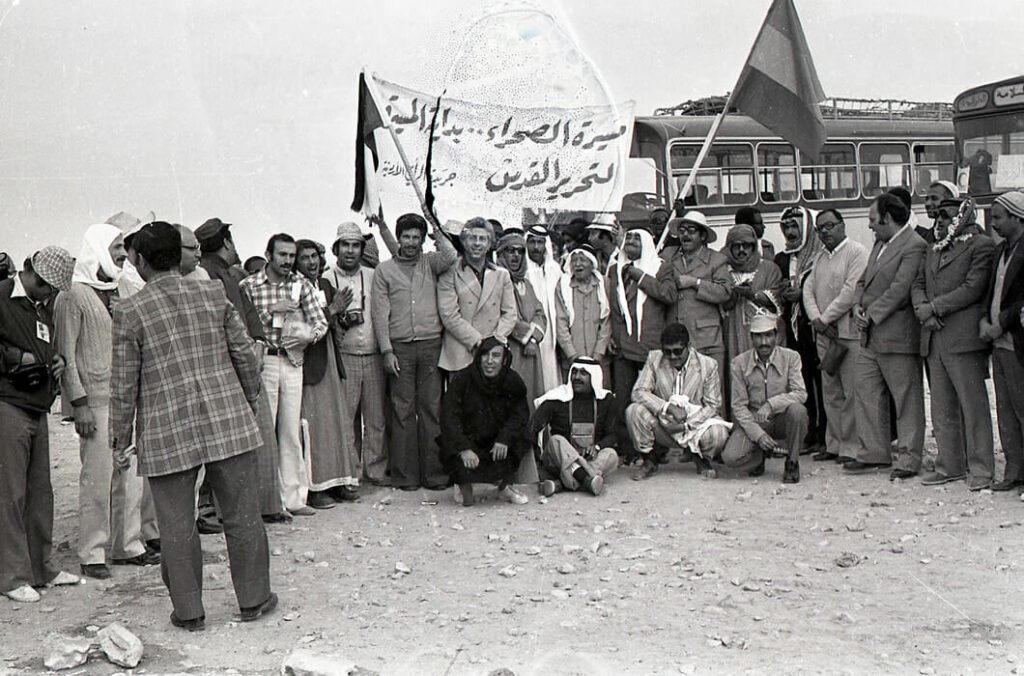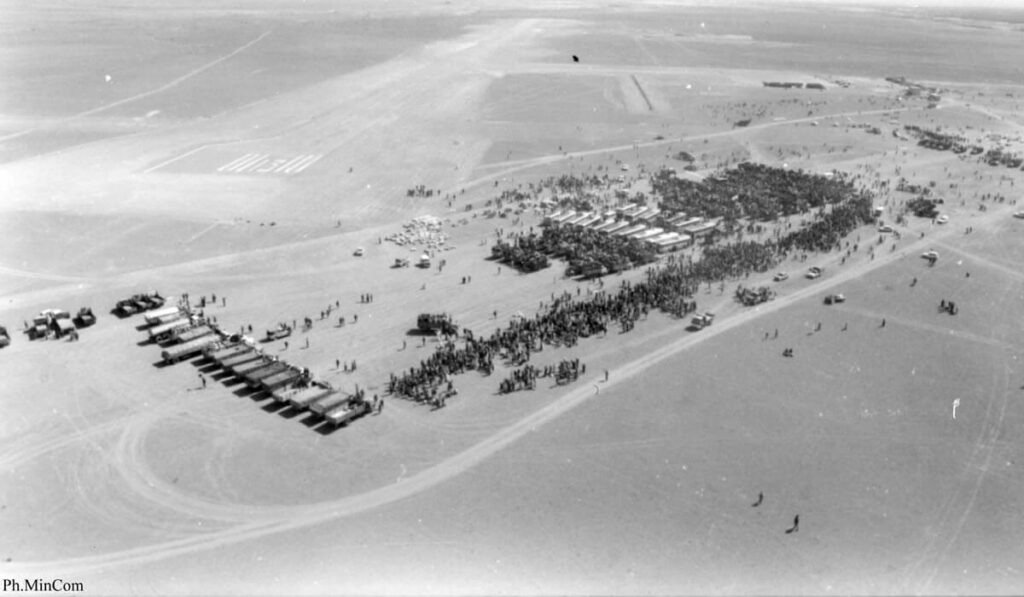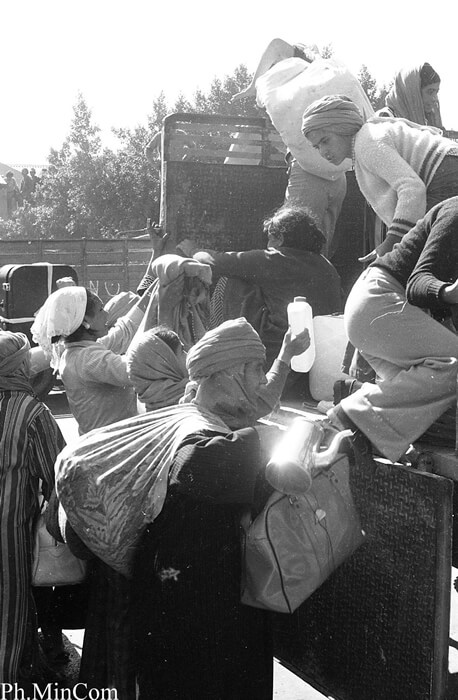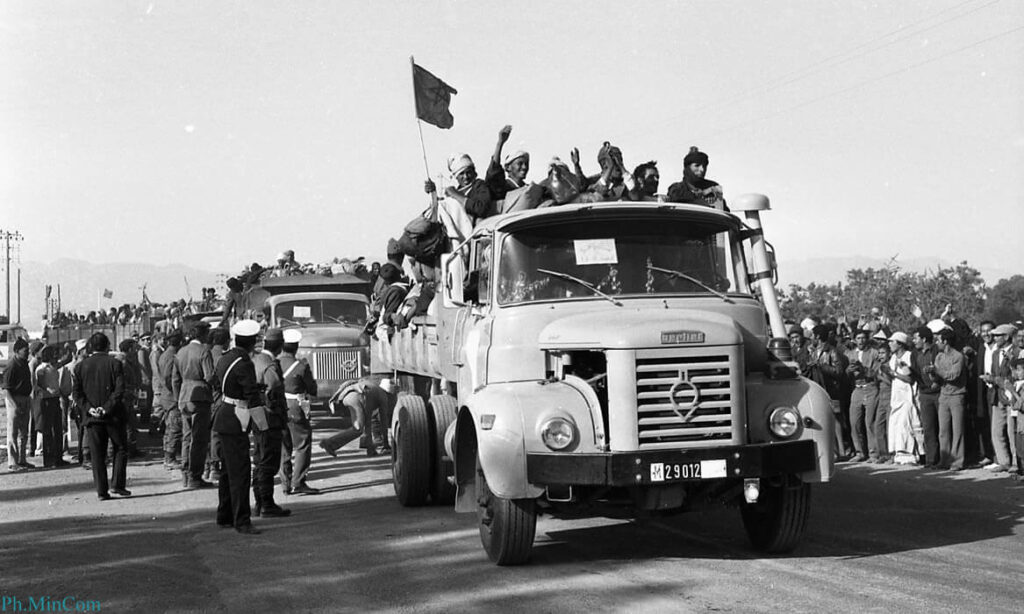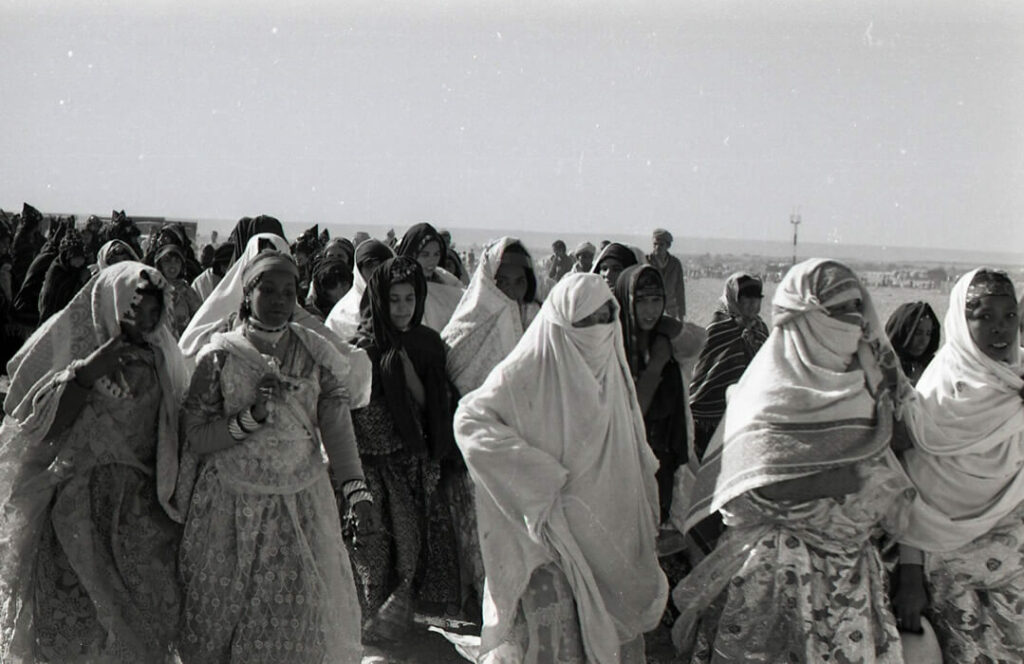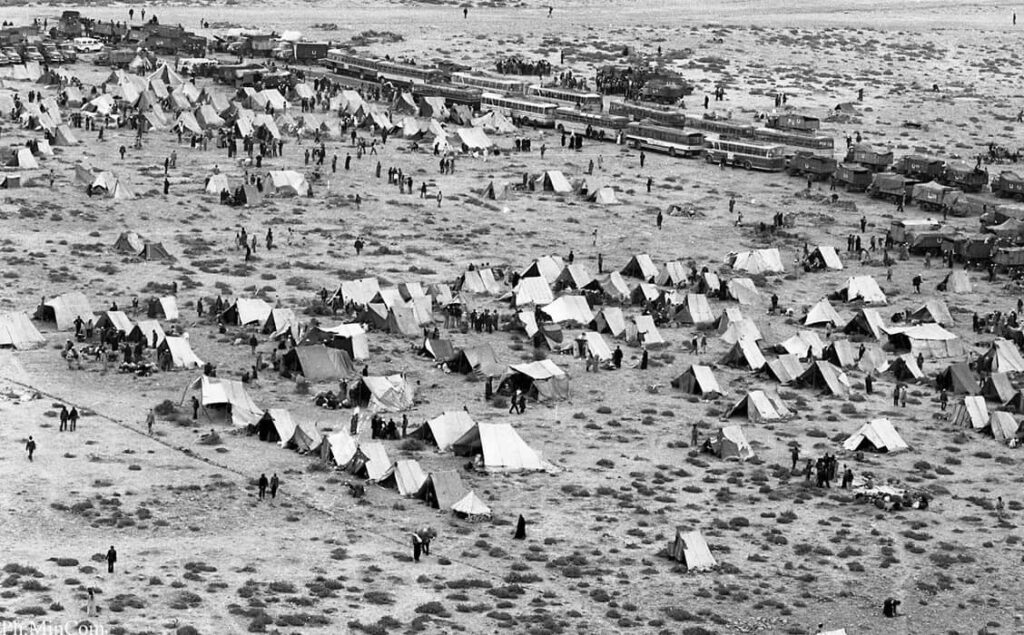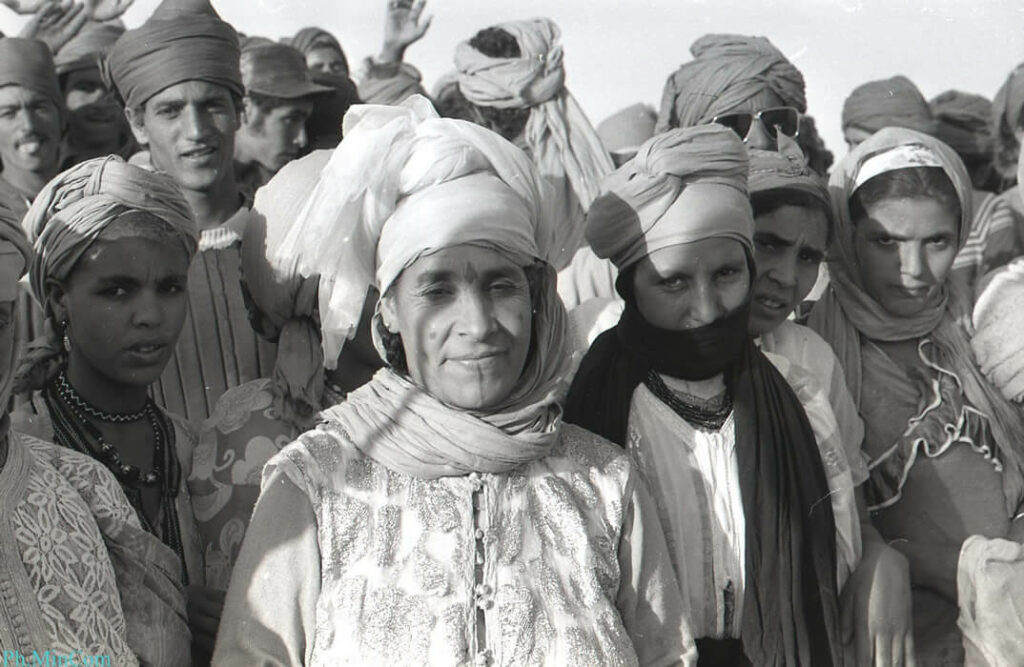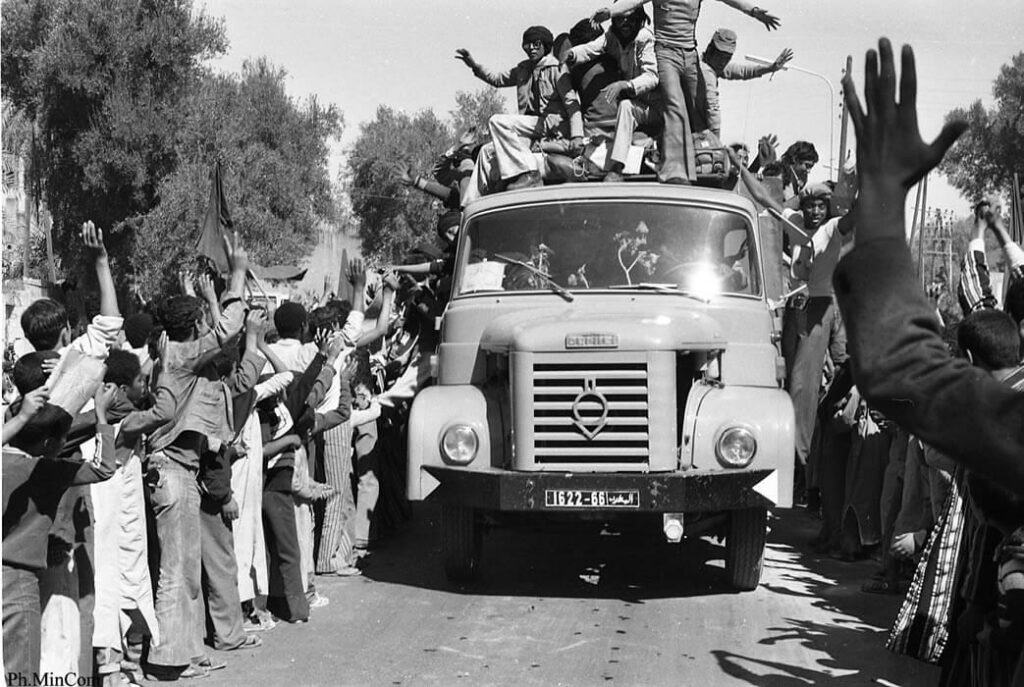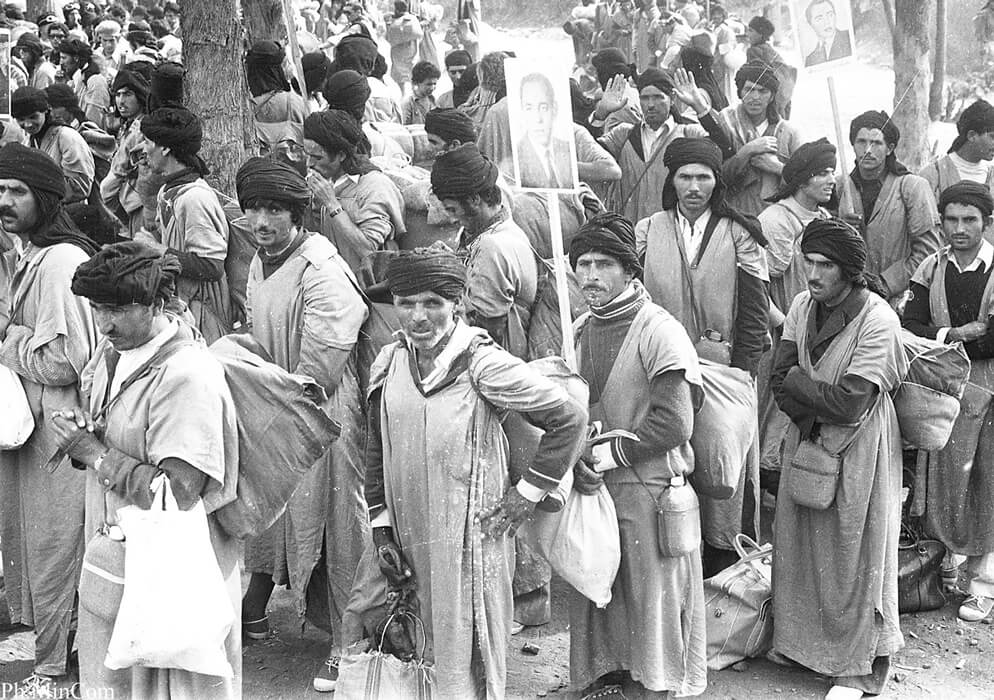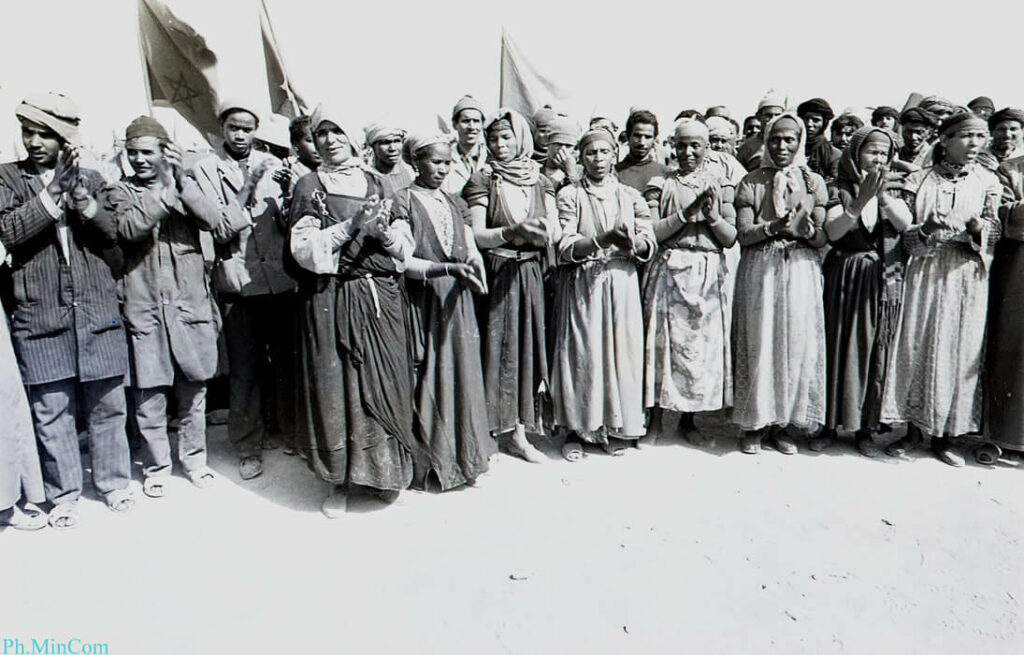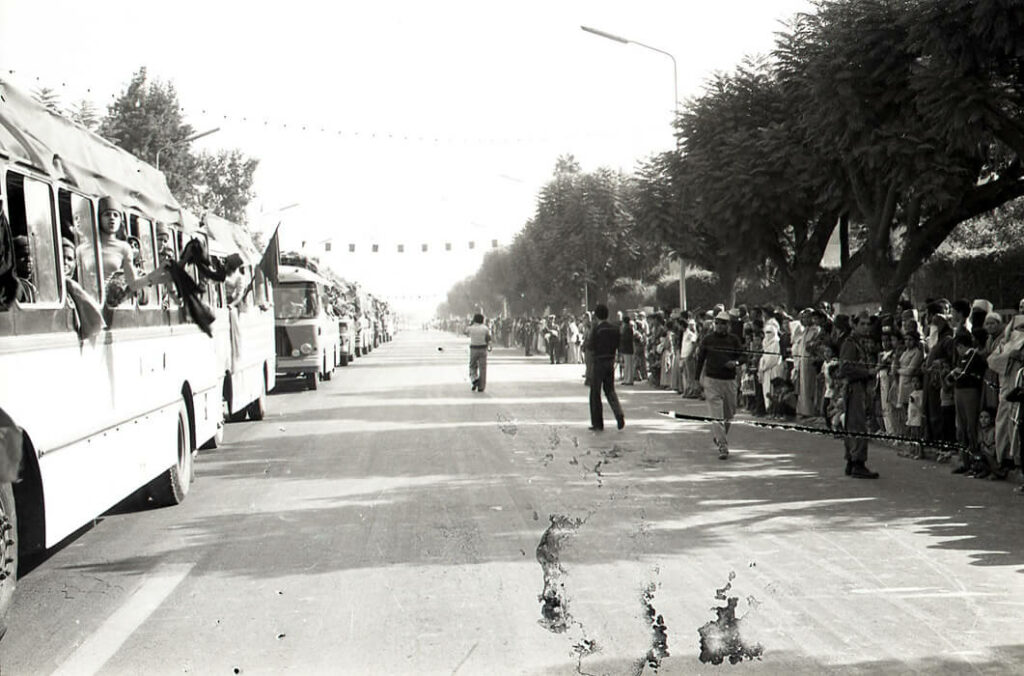





































Before the establishment of the protectorate, Morocco was a fully sovereign, independent and united State. The Sahara was completely under Moroccan sovereignty. Moroccan Sultans (Monarchs) exercised their power over the Sahrawi tribes through both the appointment of caids (sheriffs) or their personal representatives and the issuance of Dahirs (royal decrees). There had also been links of allegiance, loyalty, and attachment of all Sahrawi tribes to the King of Morocco. Historical documents, reposed in Morocco, Madrid, Paris, Lisbon and London, confirm the long-standing sovereignty of Morocco over its Saharan Provinces, which is deeply rooted in history. Throughout history, Saharan provinces had been strongly present in Moroccan diplomacy, the one that was keen to preserve Morocco’s sovereignty over its entire land and defend it against foreign threats and in times of war.
Such a presence can be traced through the existing documents related to the appointment and the dismissal of authority’ agents, officials, military and religious leaders. Not only does Sultan Moulay Abdelaziz appointed the Emir(ruler) of Trarza by a Dahir (royal decree), but He commissioned His chief minister, Sheikh Mohammed Al Hassan Ibn Yaish, to undertake an inspection tour, which was extended to the Sakia El Hamra in 1905. During his visit, the commissioner was handing out Dahirs of nominations to the caids and administrators who greeted him as a sign of loyalty to the Sultan.
During the period between 1898 and 1905, Sultan Moulay Abdelaziz was deeply invested in the construction of the city of Es-Smara, and he sent necessary materials for its construction through the Port of Tarfaya. Until the advent of the protectorate, the region used to pay taxes to the Kingdom. It should be noted that the Alawite Prince Moulay Idriss ben Abderrahman was deployed to Es-Smara, then to the rest of the country’s provinces, to collect tributes and organize the resistance movement against the French penetration of Morocco from the south of Senegal (battles he led in Tagant…).
Despite Spanish occupation, two aspects of Moroccan sovereignty were preserved: allegiance (written document of tribal leaders’ loyalty to the King) and the commitment to pray for Him in the mosques’ sermons.
In addition, Morocco has numerous other documents that prove its sovereignty over the region reposed in its documental repository and that of the European countries. During the French conquest of Algeria, the Kingdom of Morocco used to cover an area of two million square kilometers that involved the Saharan provinces, which had never been separated from it; whose edges consisted Morocco’s borders with the sub-Saharan Africa.
The Moroccan-Spanish Treaty concluded in November 27, 1912, which established a Spanish sphere of influence in the north and south of the French protectorate, is a proof that this region was governed in the name of the King by his vice representative in Tetouan. In the name of the Moroccan monarch, Spain governed not only the northern and southern regions, but also all the regions of Sakia El Hamra and Oued Eddahab.
With reference to the historical arguments at the disposal of European countries, they indicate that Morocco had sovereignty over its Saharan territory. Some of these Countries participated in the Berlin Conference in1884, or in the Algeciras Conference, where the fate of Africa was determined. Many of these countries contributed to the geographical mapping of the region, particularly Morocco. These maps placed the southern borders of the French protectorate zone on the borders of what was then called French West Africa.
In this connection, the German testimony, in particular, is of utmost importance and great value as it was the last European country to accept the imposition of the French protectorate on Morocco. In the agreement concluded by Germany in 1911 with France, Germany accepted the French protectorate on condition of the protection of the Moroccan King’s sovereignty and territorial integrity of its territory. Such a recognition means for German leaders the indissolubility of Morocco’s territorial integrity and the inalterability of its sovereignty.
All European governments are well aware of the situation resulting from the occupation of Moroccan territories by Spain. Therefore, Moroccans are entitled and obliged to work to fulfill the commitments they have made or that are made by other countries toward them and to enforce respect for international treaties that recognize the Moroccan character of the Sahara.


Due to its strategic location and its proximity to European countries, Morocco had always been the target of colonial countries’ covetousness, which had spanned more than four centuries, as the Spanish merchant movement began to appear and spread along the Moroccan coast.
The Treaty of “Cosomas”, which was concluded with Portugal in 1479, was of a particular help to Spain, as it allowed it to occupy the Canary Islands and southern Morocco. It stipulates the Spanish court’s recognition of the legitimacy of Portugal’s decision to occupy the Kingdom of Fez, as well as the Portuguese recognition of the Spanish occupation of the Canary Islands.
Since 1865, the Spanish had launched several attacks against the southern coasts of Morocco with the aim of settlement and exploitation of their fisheries and the control of their commercial movements, without any intervention from other colonial powers in these regions.
Until 1884, Spanish colonial forces could not extend their control over the entire Moroccan territory, but only over the commercial center of Dakhla, due to not only the intensity and strength of Moroccan resistance, but also the financial difficulties that Spain was facing. It had to wait for a long time until a rapprochement with France took place lying in the conclusion of agreements, including that of June 27, 1900, which delimited the influence zones of each of the two countries in the Sahara whose provisions were emphasized by the treaties of October 3, 1904 and November 27, 1912.
Thanks to French help and support, Spain occupied a commercial center in Tarfaya in 1916 and Lagouira in 1920, yet it failed to subjugate all the Saharan tribes until the year 1934 when it controlled the city of Es-Semara and the region of Oued Eddahab. However, since the signing of the Treaty of Fez on March 30, 1912, which recognized France’s territorial and administrative rule, Morocco has been divided into three zones: a French Zone, a Spanish Zone and an International Zone. The Spanish-French Treaty signed on November 27, 1912, which recognized the Spanish Zone, vested upon Spain powers similar to those of France under the authority of the representative of the Sultan, who was known as the Khalifa, while an International Zone was established in Tangier in 1923. Thus, the Spanish-French occupation, which had been maneuvering for more than a century, led to the division of Morocco into the north and the south.
Nevertheless, the Moroccan resistance of the occupation continued throughout the country until the abolition of the French protectorate through the Joint Moroccan-French Declaration signed on March 2, 1956, which repealed the Treaty of 1912, under which Morocco recovered most of its territory (Northern provinces). Meanwhile, the Spanish Zone’s ruling system was also cancelled by the conclusion of the Spanish-Moroccan Convention signed on April 7, 1956.


Morocco continued the process of completing its territorial integrity, recovering the region of Tarfaya on April 1, 1958, and Sidi Ifni in 1969, while pursuing its demand for the recovery of the regions of Oued Eddahab and Sakia El Hamra at the UN, the Organization of African Unity, the Arab League or the Non-Aligned Movement.
Morocco has been able to recover most of its territory through negotiations, gradation and peaceful means. This has always been the case with Spain, but Morocco’s adversaries, who planted the seed of the Sahara issue and opposed the completion of Morocco’s territorial integrity by creating, financing and assisting the Polisario Movement, have created disadvantageous conditions for Morocco.
After the success of the Green March, Morocco concluded the Madrid Agreement with Spain, which recognized Morocco’s right to its Sahara. Nonetheless, Algeria created the Polisario movement and hosted it in Tindouf camps, which it unilaterally named as the Camps of the Sahrawi Refugees, taking advantage of its disputes with Morocco over the common borders. Afterwards, in the period between November and December 1975, the Polozario invited a segment of the Sahrawi population to Tindouf to attend a gathering in Gueltat Zemmour. When they arrived, they were told to gather again in Bir Lahlou to be trapped to visit Tindouf and be sequestered, controlled and denied freedom of movement and to the right to return back to their homeland Morocco.
Throughout the years of the Sahara issue, Polisario has used the besieged population of Tindouf as a pressure card. Aware that it would only exist by keeping them in the Tindouf camps, it has extended the siege and continued its flagrant violation of human rights.

On October 16, 1975, the late Hassan II, announced the organization of the largest peaceful protest in history that led to the liberation of the southern provinces of the Kingdom.
This peaceful protest put an end to nearly three quarters of a century of colonialism and bitter occupation of these territories, and it enabled Morocco to complete its territorial integrity. In this connection, the International Court of Justice at the Hague recognized Morocco’s right to its desert; it declared the existence of legal ties of allegiance between the Moroccan throne and the Sahrawi people. Following this ruling, the late Hassan II announced the organization of the Green March to recover Moroccan southern provinces.
The Organization of the Green March by His Majesty late Hassan II was a wise decision to recover the region without resorting to war adventures, which renounced violence and relied on dialog to settle disputes. On November 5, 1975, King Hassan II addressed the Moroccans who had volunteered to participate in the march, saying: “tomorrow, God’s willing, you will penetrate the border. Tomorrow, God’ willing, the Green March will be launched. Tomorrow, God willing, you will step on a part of your territory, touch the sand of your Sahara and kiss the soil of your beloved nation,”.
The number of Moroccans who participated in the Green March reached 350,000 citizens, 10% of whom were women, from all regions of Morocco, in addition to delegations from the Kingdom of Saudi Arabia, Jordan, Qatar, the Emirates, the Sultanate of Oman, Sudan, Gabon and Senegal, and the Secretary General of the Organization of the Islamic Conference. King Hassan II’s choice of the number of Moroccan participants was equal to the number of births in Morocco during that period.
The King had no difficulty to convince Moroccan citizens to go to the Sahara. Indeed, the close relationship between the throne and the people and the love and respect they have for Him raised to the level of a great national duty. No other sovereign could have gathered such a large number of volunteers easily and in record time, unless he had had a high status in the hearts of his people and had great love and respect.
The volunteers in the March were armed with the Qur’an only and had no weapons, confirming its peacefulness. It was launched with a lot of regularity, accuracy and remarkable logistical organization, crossing the borders of the Sahara under different global and regional reactions. However, Spain opposed the March and requested a meeting of the Security Council to confront it. In addition to announcing, through its representative in the Security Council, that the Green March is an armed military encroachment, it moved its naval fleet to Moroccan territorial waters. It has also announced that it has laid mines over large areas of the Sahara.
After the success of the Green March at the popular, regional and global levels, as well as the incursion of Moroccan volunteers into Desert lands, the Spanish were forced to reverse their anti-Moroccan position and seek a solution to the Sahara issue. With respect to the end of the March, when late King Hassan II was asked by the French journalist Eric Laurent about the time when He decided to stop the Green March, He said it happened “at the time when all concerned parties realized that it was better for diplomacy to be present in the Sahara”, as indicated in the book “Memory of a King”. On November 9, 1975, King Hassan II announced the success of the Green March and asked the participants to return to the starting point: Tarfaya.
The achievements of the Green March event, which became a milestone in Morocco’s modern history, include the acceptance of negotiations by Spain and the conclusion of the Madrid Agreement signed on November 14, 1975, an agreement approved by the United Nations General Assembly, according to which Morocco entered Laayoune peacefully. In addition, Spanish administration withdrew from the region on February 26, 1976, two days before the February 28 deadline set by the Madrid Agreement.
MOROCCO GREEN MARCH 1975


Invest Tourism
The southern regions of Morocco offer a variety of landscapes mixing desert dunes to beach sand, palm oases to rock carvings, a rich and varied ancestral culture and modern water sports, which makes it not only a dream destination for domestic and foreign tourists but also the basis of a very promising tourism industry.
The tourism assets of the southern provinces are undeniable: a 667 km coastline with a 400 km2 bay suitable for various water sports and attractive historical monuments, a rare species reserves in the region of Dakhla Oued Eddahab, a strategic geographical position, millennia-old archaeological sites, international tourist events in the region of Laayoune Sakia Lhamra, famous beaches and oases and palm groves suitable for rural tourism in the region of Guelmim Oued Noun.
This tourism potential in the southern provinces is well served by an unprecedented development of infrastructure including the construction of a modern road network, ports, and airport in the three regions. With their assets and the efforts of public authorities, the southern provinces have succeeded in attracting significant investment through the development of eco-responsible tourist accommodation, amusement parks and recreation, water sports schools, thermal tourism …

…



